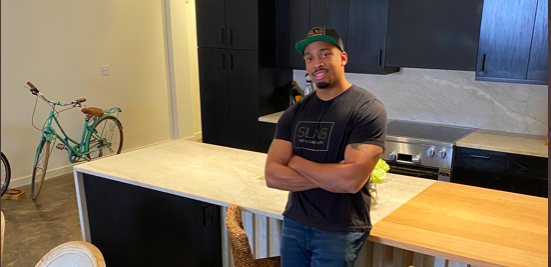Hurricane Katrina is already listed in the meteorological annals of United States history as one of the most devastating natural disasters in modern times. That was ten years ago on August 29, 2005.
The tropical depression that formed over the Bahamas and grew into Hurricane Katrina caused great alarm in the Gulf Coast region of the United States six days before it actually attained its status as a Category 3 hurricane rolling through the Gulf of Mexico.
The National Weather Service predicted most of the Gulf Coast region might be uninhabitable for weeks, if not longer.
That prediction was made a week before Katrina hit New Orleans. Yet, there wasnt much that was done regarding preparation on the part of the federal government, state government or the local government of the city of New Orleans.
Katrina earned her name on August 24th just hours before making landfall in Fort Lauderdale, Florida
I was living in Desoto, Texas at the time and many of the local news channels were all over the story — likely because southern coastal cities such as Galveston and Houston were at risk as well.
My family and I werent located near any large bodies of water, so flooding wasnt a concern. However, we did expect some very strong winds and took precautionary measures to prevent flying debris from busting any windows. Logically there was no way the storm could cause a substantial amount of damage to North Texas, I thought. But safety measures were taken nonetheless.
As Katrina made its second landfall, this time in Bay St. Louis, Mississippi as a Category 3 hurricane, the entire country held its collective breath. There was a considerable amount of wind damage caused by the storm, and multiple deaths and injuries, but everyone expressed cautious delight at the fact Katrina did not hit any major metropolitan areas yet. There was even some hope the storm might not cause extensive damage to New Orleans because of speculation that it may downgrade once again.
At the time I was working as a waiter during the day and a laborer at FedEx at night. My co-workers and I joked about the Black-sounding name of the storm and how its earlier progression to a Category 5 storm, and subsequent regression down to a Category 3 storm was indicative of an indecisive woman.
Misogyny isnt necessarily a soothing balm I lean on in times of distress, but thats just the way the conversation was going. And I was guilty of going with it. We laughed nervously and didnt speak of it much more that day.
On the way home I could see local strip malls placing boards on windows and securing objects in anticipation of the worst, and I scoffed at them like a grasshopper laughing at the diligence of the ant. Everyone was worked up by speculative news reports calling Katrina the storm of the century, but I couldnt fathom how a storm that made landfall 500 miles away could possibly affect me. In my ignorance, I didnt account for the fact that the storm itself was 400 miles in diameter.
The day of the storm, as the eye approached New Orleans, some newscasters held out hope that the swamp lands that surrounded the Mississippi Delta would absorb a substantial amount of the storms impact. However, the wetlands had been eroded significantly over the years by land reclamation projects and neglect.
When the storm finally struck New Orleans with sustained winds between 100 and 140 mph, people who failed to evacuate began to immediately regret the decision as windows shook and old chimneys toppled from rooftops.
When I thought of hurricanes the fear factor always centered on the powerful winds that could tear homes made of brick and mortar asunder. But it was the storm surge and rain that would spell disaster for the city that care forgot.
For years New Orleans had been considered at great risk for flooding during a major hurricane because of poorly constructed levees that were built in the antiquity of this country. The levees were designed to withstand Category 3 conditions. The Army Corp of Engineers has been charged with building and maintaining the levees in the New Orleans area since Congress passed the Flood Control Act of 1965. Since then there has only been one instance to sure up the levees, that coming in 1985 when surge barriers were replaced with taller levees.
However, history tells the sobering tale of a system that was grossly unprepared for the height of the storm-induced waves and underestimated the strength required as well. This decades-long oversight was explained by the Army Corp of Engineers afterwards.
Tests made by the Army Corp of Engineers in the 80s predicted the levees would fail under pressure from high water but the information wasnt used in the design.
The fact that New Orleans sits six feet below on average sea level and is near numerous major bodies of water (Lake Pontchartrain, the Mississippi River and the Gulf of Mexico) was not enough to galvanize the federal government into taking action.
Additionally, its no coincidence that much of the worst damage occurred in low income, predominately Black neighborhoods. The quality of the levees, the proximity of homes to the levee in place like the Lower Ninth Ward, contributed to the devastation.
Also, according to official estimates, the initial breach in the east occurred on a section of the I-wall south of the Florida Avenue Bridge at 5 am on the morning of August 29. The water level was below the top of the flood wall but the failure occurred due to water seepage underneath the canal wall, which moved the wall and caused it to fail.
A second breach occurred six blocks to the south at approximately 7:45 am and eventually grew into a 1000 foot wide maw allowing a deluge of water that submerged the entire Lower Night Ward under as much as 8 feet of water.
Hundreds died in the flooding and the immediate aftermath, homes and businesses were washed away. Nearly 100 bodies were recovered from these areas.
Initially, many believe a barge anchored on the other side of Lake Pontchartrain broke loose and caused this breach. Some even speculated that the levee did not fail but was purposely bombed by the Army Corp of Engineers in an effort to save the French Quarter and other valuable New Orleans real estate from the worst of the flooding.
As abhorrent as the prospect of such a thing is, there is some historical context for the claim.
The Mississippi Flood of 1927 is still considered the worst flood in the history of the United States. It is a statement of fact that levees in rural Louisiana were blown to save New Orleans from flooding. Hundreds of thousands of poor, rural Blacks were left homeless.
It is a matter of speculation among survivors whether this method was used in New Orleans Lower Ninth Ward to save the wealthy Lake Vista district by then-mayor Victor Schiro in 1965 during Hurricane Betsy.
Neither the Hurricane Betsy theory nor the Hurricane Katrina theory have ever been substantiated with concrete evidence.
The levee systems are made by sand, soil and other earthen materials and usually run parallel to the flow of a body of water. Failure occurs when high water flows over the top, eroding away the soil and sand.
By some estimates, there were 50 levee failures throughout the system that surrounds New Orleans. A calamitous, catastrophic failure of biblical proportions. Even prior to the storm there was much concern regarding the sturdiness of the levees that held back Lake Pontchartrain, Lake Borgne and the swamps and marshes to the east and west of the city.
Most of New Orleans poorest neighborhoods sat below sea level.
If it keeps on rainin’, levee’s goin’ to break And the water gonna come in, have no place to stay
Well all last night I sat on the levee and moan
Thinkin’ ’bout my baby and my happy home If it keeps on rainin’, levee’s goin’ to break
And all these people have no place to stay
Now look here mama what am I to do I ain’t got nobody to tell my troubles to I works on the levee mama both night and day I ain’t got nobody, keep the water away
Oh cryin’ won’t help you, prayin’ won’t do no good
When the levee breaks, mama, you got to lose I works on the levee, mama both night and day I works so hard, to keep the water away I had a woman, she wouldn’t do for me I’m goin’ back to my used to be
I’s a mean old levee, cause me to weep and moan
Gonna leave my baby, and my happy home.
When the Levee Breaks (1928)
By Memphis Minnie and Kansas Joe McCoy
By some estimates, upwards of 100,000 of New Orleans 500,000 residents did not have access to a car thus were dependent upon others to assist them with evacuation. Those who were unable to evacuate were horded into the Superdome and hundreds of thousands tried their luck by attempting to wait out the storm at home.
It wasnt until the day before the storm that New Orleans Mayor Ray Nagin issued the first ever mandatory evacuation of New Orleans and designated the Superdome as a refuge of last resort for those who were unable to get out of the city.

As I watched the scenario unfold from miles away in North Texas, the whole situation just looked calamitous and devoid of effective leadership. Nagin looked flustered, the Governor Blanco actually seemed to be doing a decent job at first glance. However, she waited until after the storm had already made landfall to commandeer schools buses from the surrounding parishes to begin evacuating the remaining survivors.
Also, the delayed response of FEMA, then headed by director Mike Brown, resulted in the numerous deaths. Mayor Nagin reportedly ordered police to cease search and rescue efforts concentrate law enforcement efforts toward stemming looting. Thus, picking property as a priority over the lives of people. Most of whom were Black.
Then there were the news reporters and their hyperbolic reports of rampant rape, robbery and lawlessness among the survivors housed at Superdome, and photos of dead bodies floating in water, lying in the street or even sitting in a wheelchair draped with a sheet, some of which were unattended for days. These images haunt me and still fill me with sadness as these words are typed.
As is often the case when disaster strikes, celebrities from sports and entertainment joined the humanitarian effort. Jamie Fox, John Travolta, Brad Pitt, Oprah Winfrey, George Clooney, Jay Z, Diddy and many others pledged millions to the effort, but there was some speculation regarding whether or not those funds actually ever got to the people who needed it most.
And who could forget Kanye West on national television looking directly into the camera and uttering those infamous words George Bush doesnt care about Black people. Comedic actor Mike Meyers, who stood alongside him on the broadcast, was stunned into rare silence at Wests audacity. However, years later, he would admit agreement with Kanyes assessment.
The total cost for the storm and the subsequent aftermath cost over 1,500 lives in Louisiana alone as well as over $100 billion in damages. An estimated 34,000 people had to be rescued from New Orleans after the storm.
FEMA was grossly unprepared, President George W. Bush seemed ignorant of the severity of the disaster. Bush wouldnt even set foot in the disaster area until a week after the levees broke.
The human costs were immeasurable as lives, homes and entire communities were wiped away in the blink of an eye.
In the weeks and months afterwards, stories began to circulate from all over the United States regarding the criminal elements amid Katrina evacuees. Horror stories of gang warfare, violence and drug import from places like Houston, Dallas, St. Louis, Atlanta, Newark, NJ, New York City and many other locations in between.
The victims of Katrina, said to be rapists, robbers and murderers amid the confusion and chaos wrought within the desperate confines of the Superdome, were now being blamed for the uptick in crime in places that already had a considerable criminal element.
They were speaking of the survivors as if they were an invading Mongol horde, and that was the Black people. The stuff Whites were saying isn’t even fit to print. American Calvinist scapegoating at its most reprehensible.
In Dallas, I knew of several young men who confided in me that they had high-powered weaponry to offset any surge in competition from New Orleans displaced New Orleans residents due in part to stories of vicious New Orleans gangsters indiscriminately killing off local gangsters in a desperate attempt to grab up criminal enterprises from individuals they felt were of a lesser breed. Of course, I suggested they not believe the rumors. But the streets being as they are, no threat, real or imagined, will go unanswered.
The FEMA checks were another cause of great angst within the hood. The hustlers were happy that a new influx of cash and customers were on the way, but many others felt most of these victims were in fact charlatans looking to make a quick dollar. As an individual who worked at a FEMA call center in North Dallas for five months following the storm, I cant tell you how many desperate individuals would call in a rage, in tears or in total exhaustion about their checks from area codes that were so foreign to their way of life that it might as well had been on the moon.
And those who were lucky enough to get a trailer from FEMA were horrified at the realization they were toxic. Can a brother get a break? Apparently not.
****
Ten years later, New Orleans is still struggling to recover its pre-storm population levels, business levels and housing levels.
Ten years later and Black people are worse off than they were before the storm, and White people are better off. Officially, there is a positive air regarding the future of New Orleans with an influx of new residents with lighter skin tones. Chocolate City, as was phrased by former mayor Ray Nagin, is now only 59 percent Black after the hemorrhaging 100,000 Black residents.
According to a National Urban League study, the median income of African Americans and Whites grew by 18 percent following Katrina, and the number of Black children living in poverty increased from 44 to 51 percent.
From a Black point of view, the city is now rife with gentrification, increased poverty among Blacks and the already dissolving Black middle class may have been irreparably damaged as once Black neighborhoods, working class and middle class, have largely been ignored in the rebuilding effort.
And to this day, the suffering for those displaced families and their forgotten communities continues.
Rest in Peace, New Orleans.
Love Live New Orleans.



